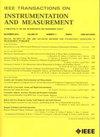Multiscale Attention Networks for Pavement Defect Detection
IF 5.9
2区 工程技术
Q1 ENGINEERING, ELECTRICAL & ELECTRONIC
IEEE Transactions on Instrumentation and Measurement
Pub Date : 2023-07-24
DOI:10.1109/TIM.2023.3298391
引用次数: 2
Abstract
Pavement defects such as cracks, net cracks, and pit slots can cause potential traffic safety problems. The timely detection and identification play a key role in reducing the harm of various pavement defects. Particularly, the recent development in deep learning (DL)-based convolution neural networks (CNNs) has shown competitive performance in image detection and classification. To detect pavement defects automatically and improve effects, a multiscale mobile attention-based network, which we termed MANet, is proposed to perform the detection of pavement defects. The architecture of the encoder–decoder is used in MANet, where the encoder adopts the MobileNet as the backbone network to extract pavement defect features. Instead of the original路面缺陷检测的多尺度注意力网络
路面缺陷,如裂缝、网状裂缝和坑槽,可能会导致潜在的交通安全问题。及时检测和识别对减少各种路面缺陷的危害起着关键作用。特别是,基于深度学习(DL)的卷积神经网络(CNNs)的最新发展在图像检测和分类方面显示出了具有竞争力的性能。为了自动检测路面缺陷并提高检测效果,我们提出了一种基于多尺度移动注意力的网络,称为MANet,用于检测路面缺陷。MANet中使用了编码器-解码器的架构,编码器采用MobileNet作为骨干网络来提取路面缺陷特征。在网络的深度可分离卷积(DSConv)层中使用了多尺度卷积核,而不是原始的$3\,\,\乘以3$卷积。此外,混合注意力机制被单独地结合到编码器和解码器模块中,以推断输入中间特征图的空间点和通道间关系特征的重要性。所提出的方法在两个公开可用的基准数据集上实现了最先进的性能,即Crack500(500个裂纹图像,像素为$2000\,\,\乘以1500$)和CFD(118个裂纹图像的像素为480\,\、\乘以320$)数据集。所提出的方法在这两个数据集上的平均并集交集(MIoU)分别达到0.7219和0.7788。烧蚀实验表明,多尺度卷积和混合注意力模块可以有效地帮助模型提取高级特征表示,并生成更准确的路面裂缝分割结果。我们在局部收集的路面裂缝图像(131张图像,像素为1024\,\,\乘以768$)上进一步测试了该模型,并取得了令人满意的结果。所提出的方法在本地数据集上实现了0.6514的MIoU,并且优于其他比较的基线方法。实验结果证明了该方法的有效性和可行性,为实际应用场景中的路面裂缝检测提供了可行的解决方案。我们的代码可在https://github.com/xtu502/pavement-defects.
本文章由计算机程序翻译,如有差异,请以英文原文为准。
求助全文
约1分钟内获得全文
求助全文
来源期刊

IEEE Transactions on Instrumentation and Measurement
工程技术-工程:电子与电气
CiteScore
9.00
自引率
23.20%
发文量
1294
审稿时长
3.9 months
期刊介绍:
Papers are sought that address innovative solutions to the development and use of electrical and electronic instruments and equipment to measure, monitor and/or record physical phenomena for the purpose of advancing measurement science, methods, functionality and applications. The scope of these papers may encompass: (1) theory, methodology, and practice of measurement; (2) design, development and evaluation of instrumentation and measurement systems and components used in generating, acquiring, conditioning and processing signals; (3) analysis, representation, display, and preservation of the information obtained from a set of measurements; and (4) scientific and technical support to establishment and maintenance of technical standards in the field of Instrumentation and Measurement.
 求助内容:
求助内容: 应助结果提醒方式:
应助结果提醒方式:


